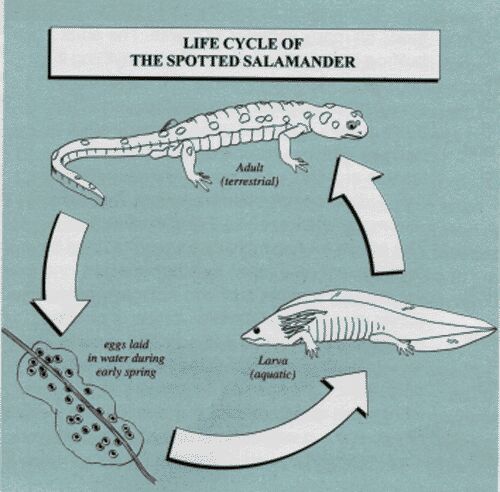| Most salamanders evolve in a series of stages. They begin as an egg, then the larva stage, and finally an adult. Most North American species of salamanders have aquatic eggs and larva, while the adult stage is a land dweller. Newly hatched sallies, called larva, resemble to tadpoles. The larvae have external gills, a tail, small legs, and a mouth with teeth. Unlike tadpoles, the salamander larvae eat tiny insects found in the water. After several weeks the larvae will have shed their external gills, grown lungs, evolving into an early adult stage. Then it moves onto land to continue to develop into adult form. |

